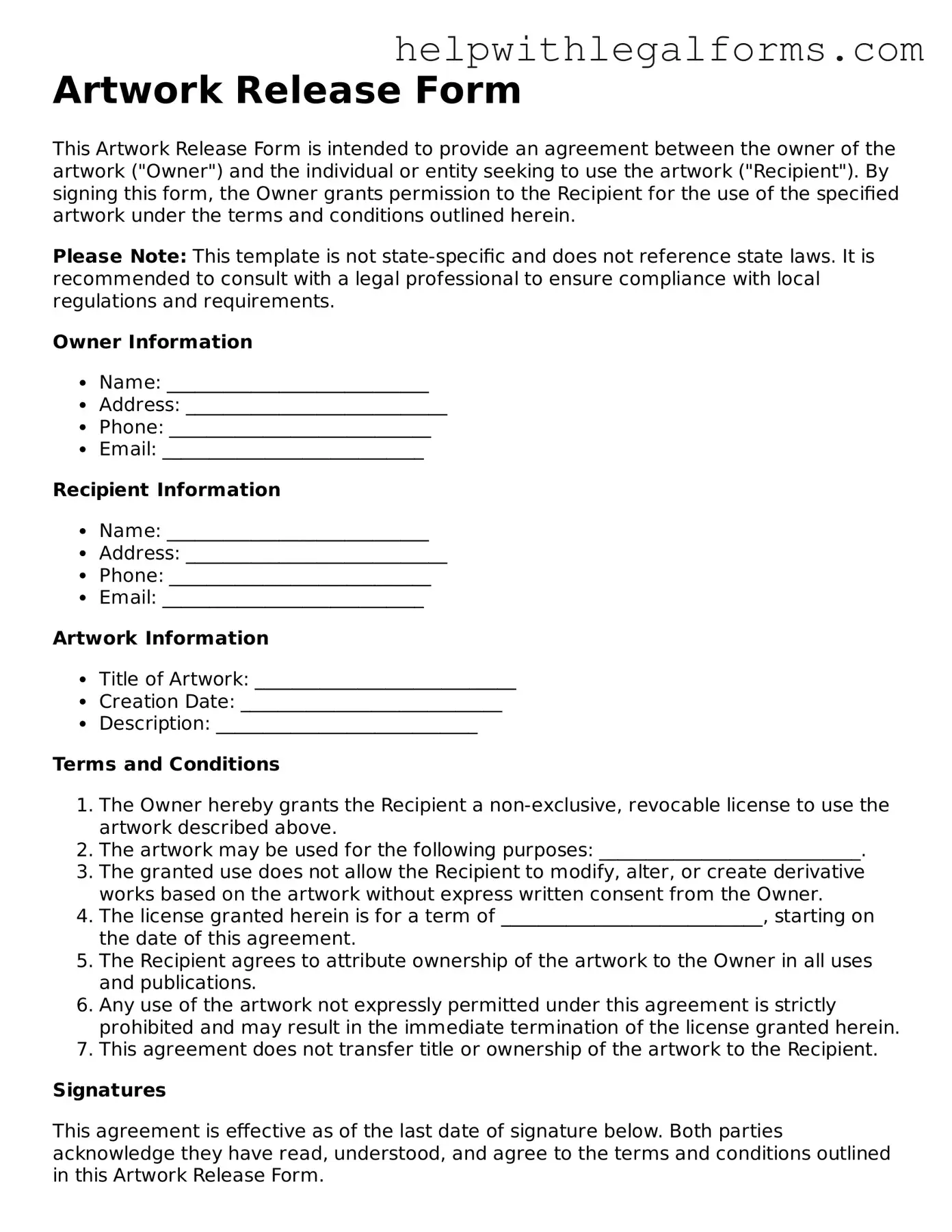Artwork Release Form
This Artwork Release Form is intended to provide an agreement between the owner of the artwork ("Owner") and the individual or entity seeking to use the artwork ("Recipient"). By signing this form, the Owner grants permission to the Recipient for the use of the specified artwork under the terms and conditions outlined herein.
Please Note: This template is not state-specific and does not reference state laws. It is recommended to consult with a legal professional to ensure compliance with local regulations and requirements.
Owner Information
- Name: ____________________________
- Address: ____________________________
- Phone: ____________________________
- Email: ____________________________
Recipient Information
- Name: ____________________________
- Address: ____________________________
- Phone: ____________________________
- Email: ____________________________
Artwork Information
- Title of Artwork: ____________________________
- Creation Date: ____________________________
- Description: ____________________________
Terms and Conditions
- The Owner hereby grants the Recipient a non-exclusive, revocable license to use the artwork described above.
- The artwork may be used for the following purposes: ____________________________.
- The granted use does not allow the Recipient to modify, alter, or create derivative works based on the artwork without express written consent from the Owner.
- The license granted herein is for a term of ____________________________, starting on the date of this agreement.
- The Recipient agrees to attribute ownership of the artwork to the Owner in all uses and publications.
- Any use of the artwork not expressly permitted under this agreement is strictly prohibited and may result in the immediate termination of the license granted herein.
- This agreement does not transfer title or ownership of the artwork to the Recipient.
Signatures
This agreement is effective as of the last date of signature below. Both parties acknowledge they have read, understood, and agree to the terms and conditions outlined in this Artwork Release Form.
Owner Signature: ____________________________ Date: ____________
Recipient Signature: ____________________________ Date: ____________
